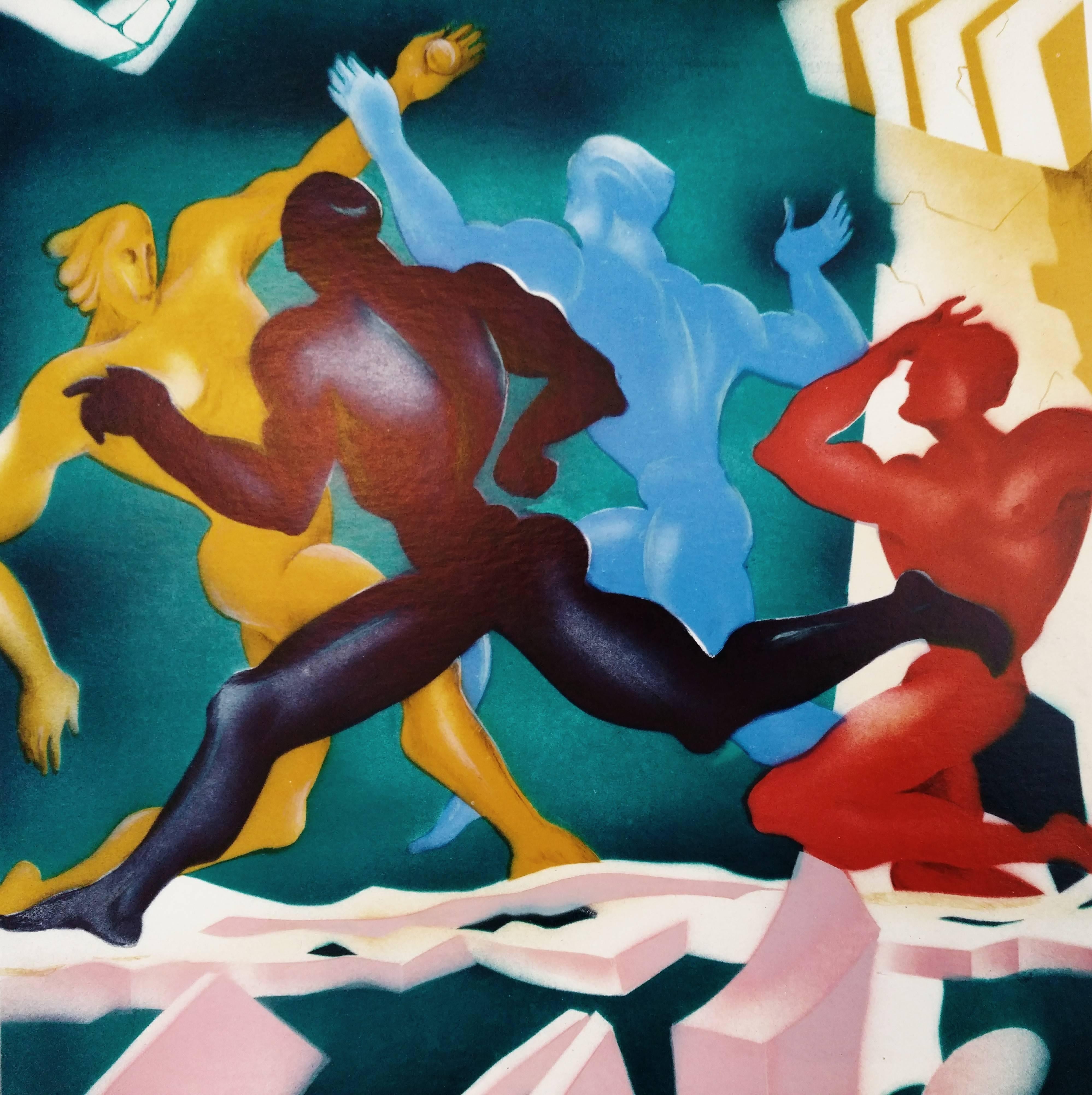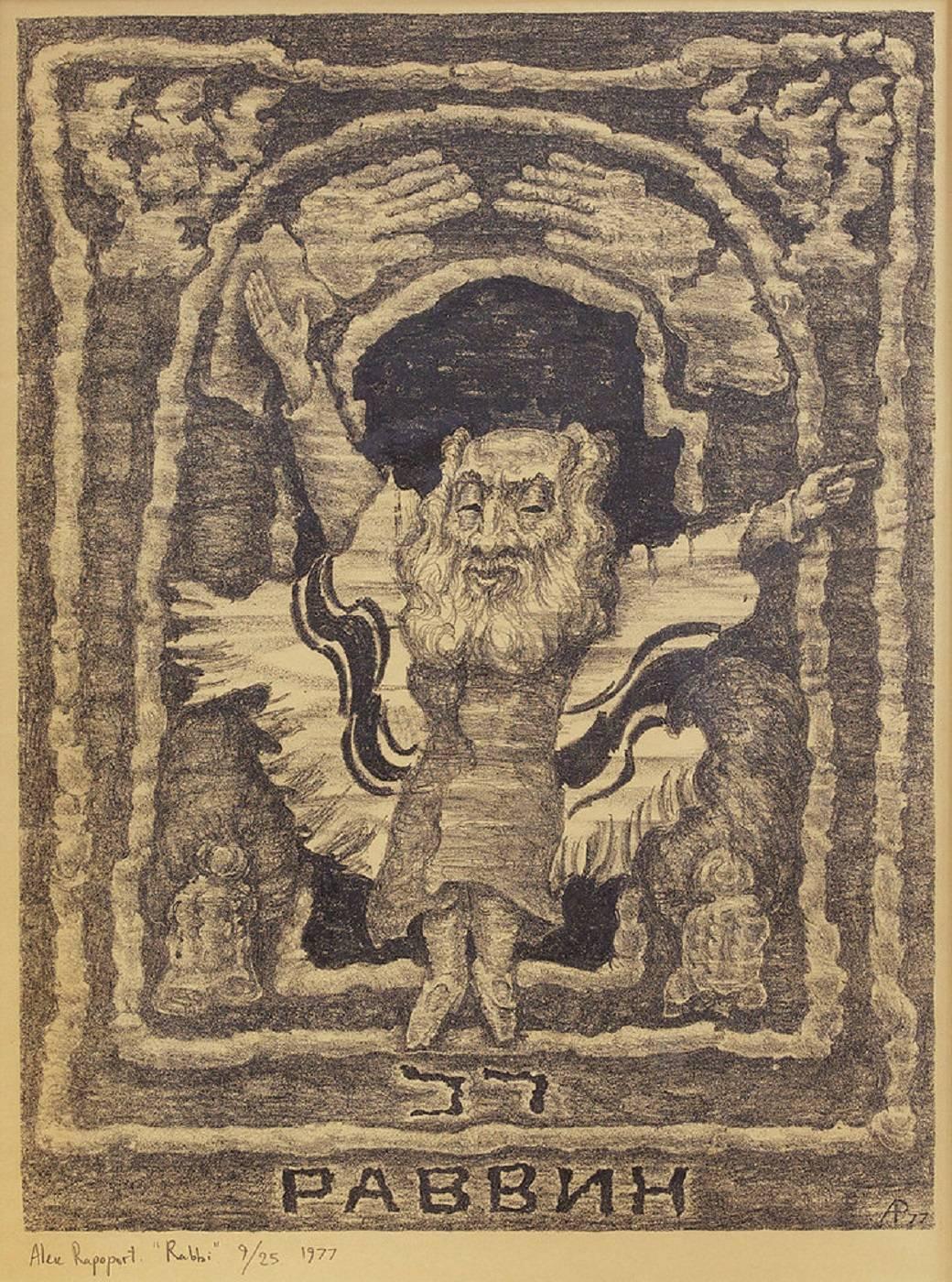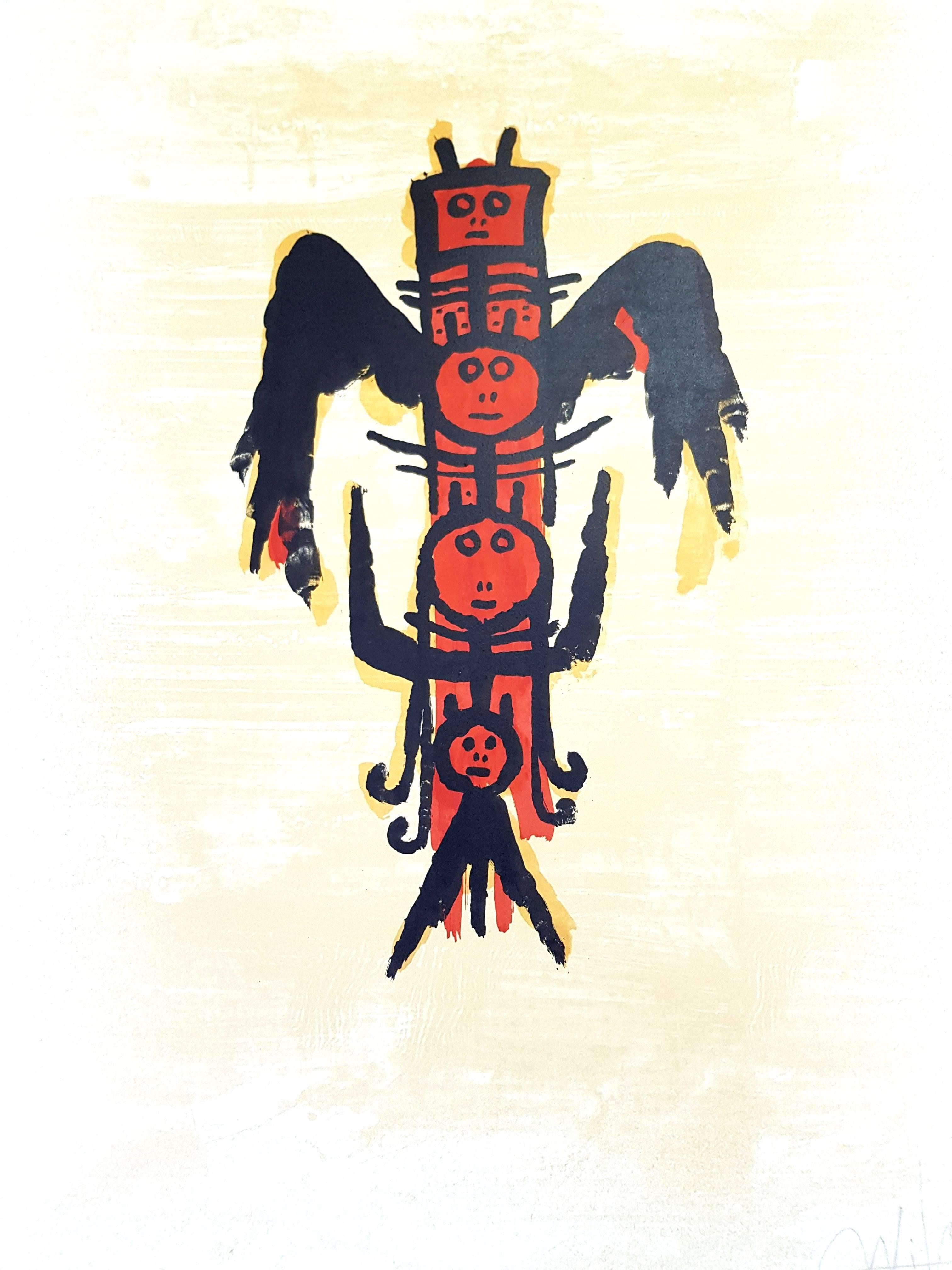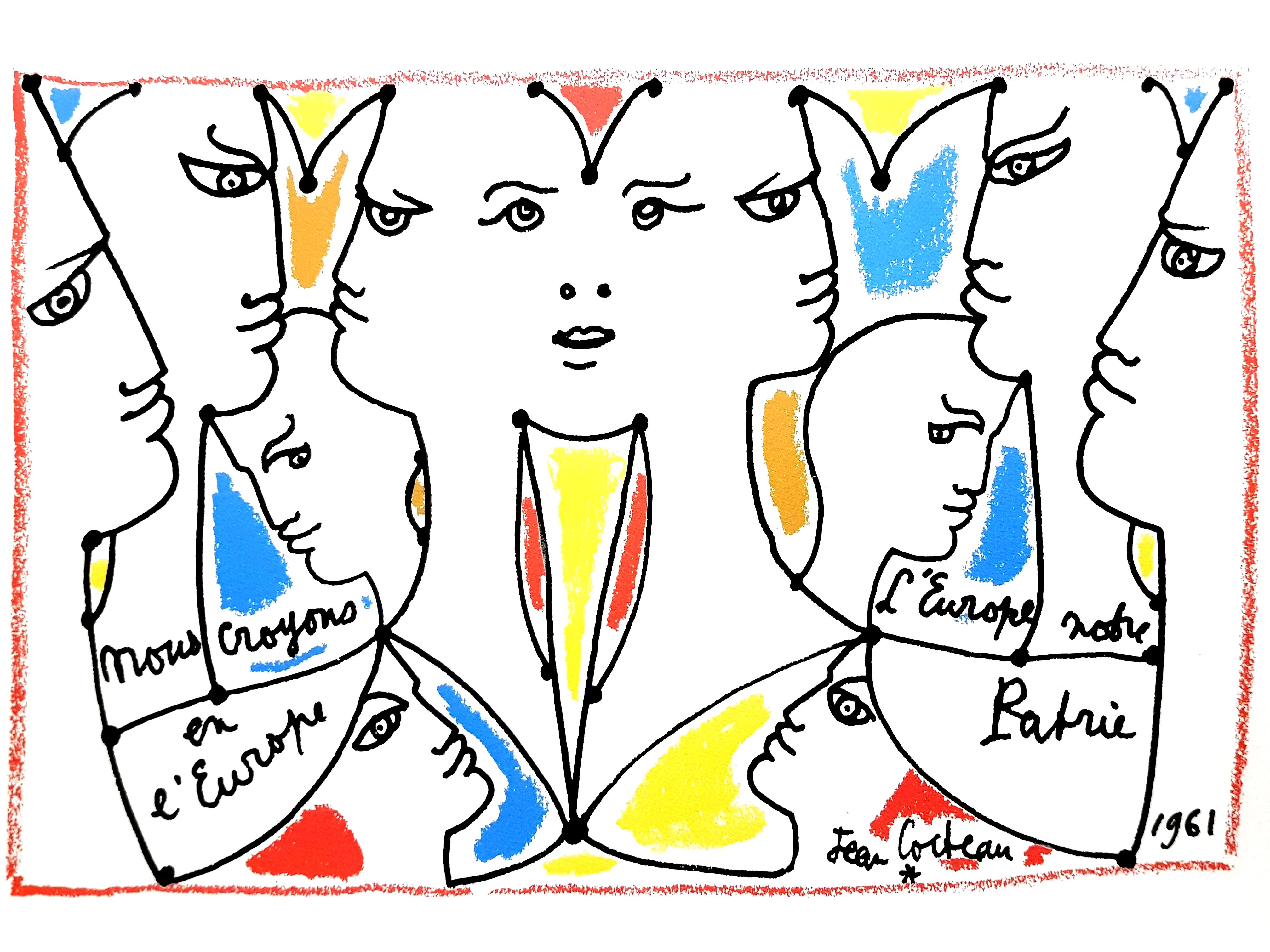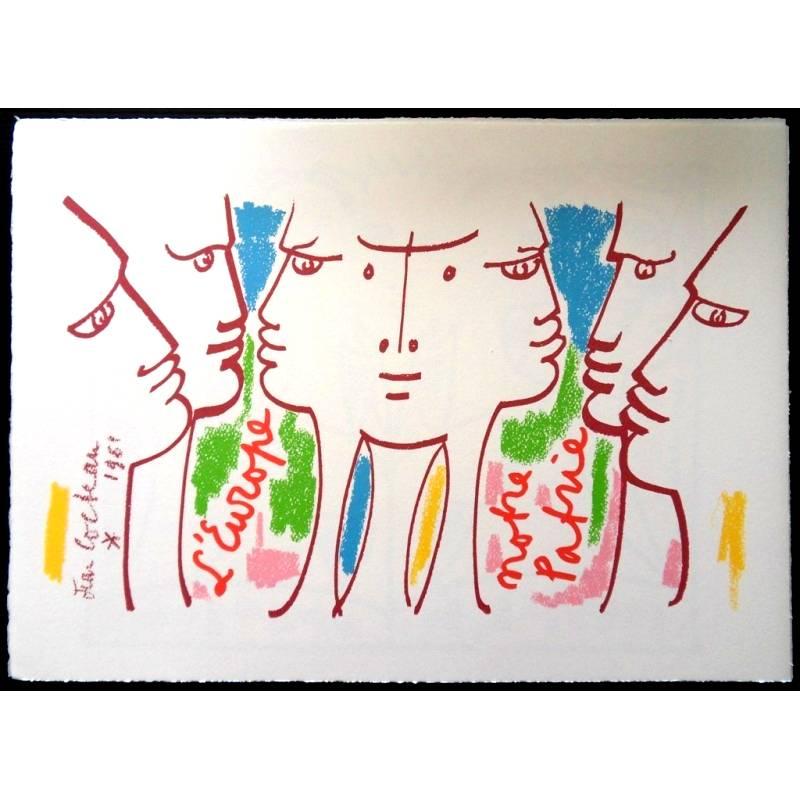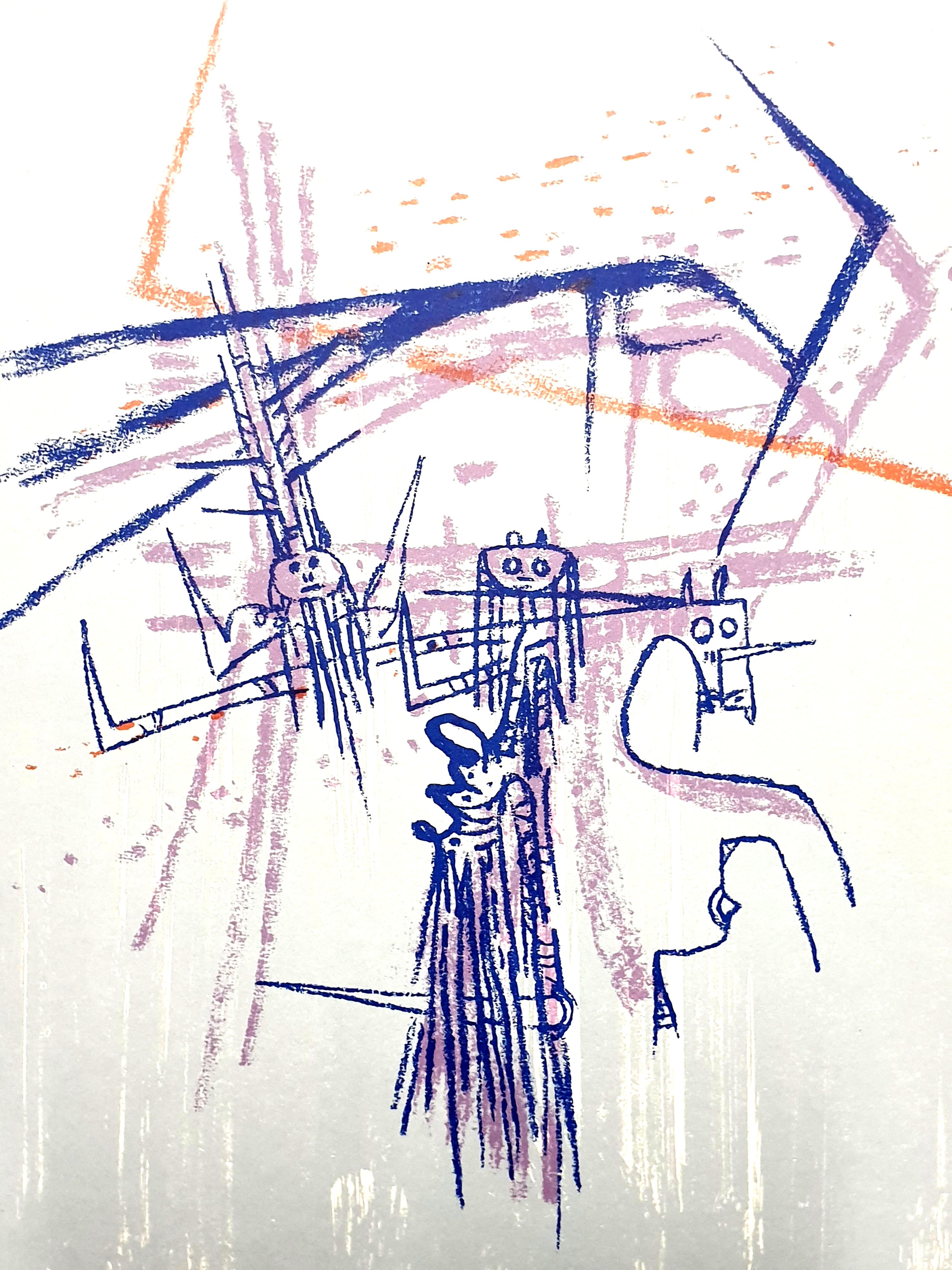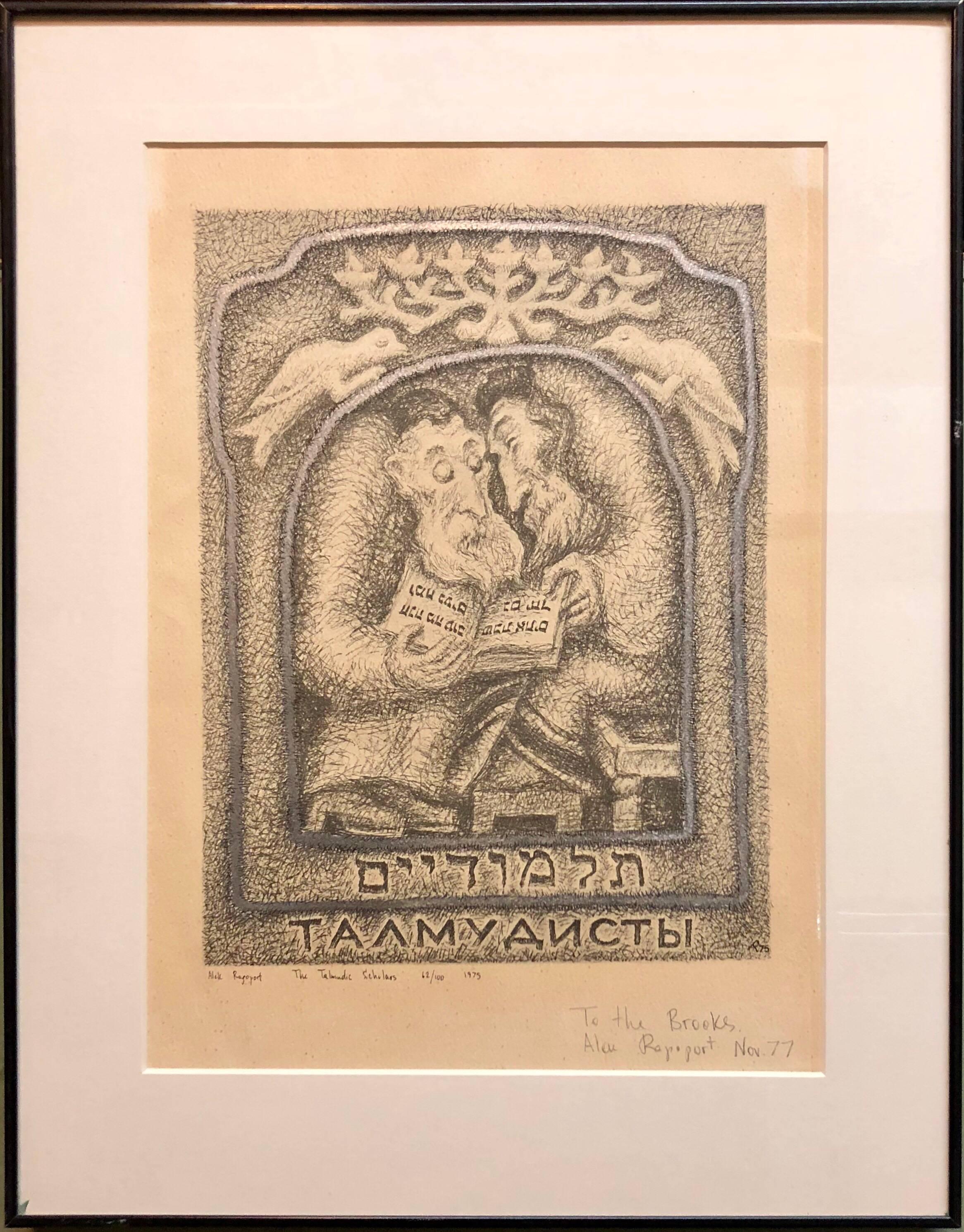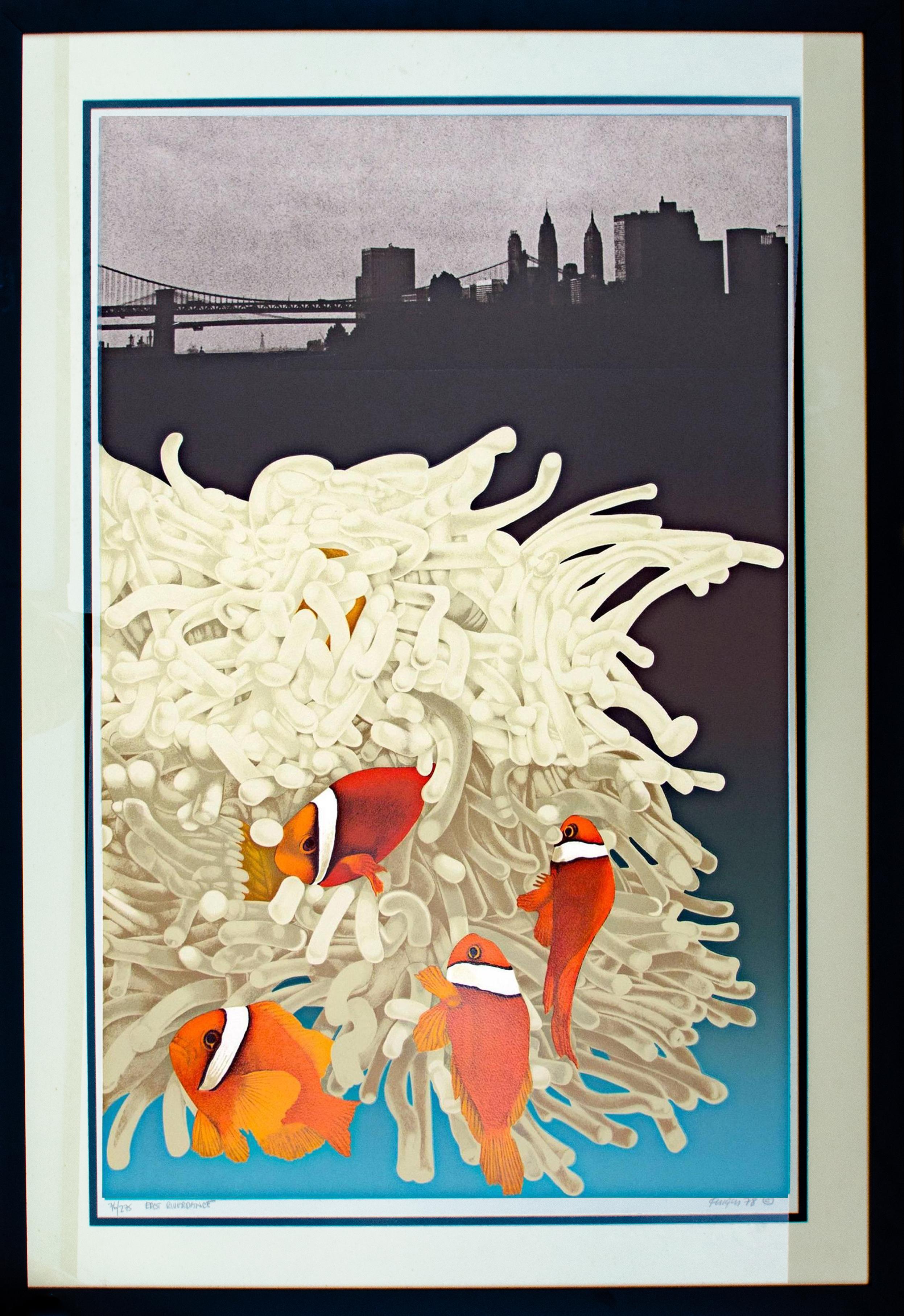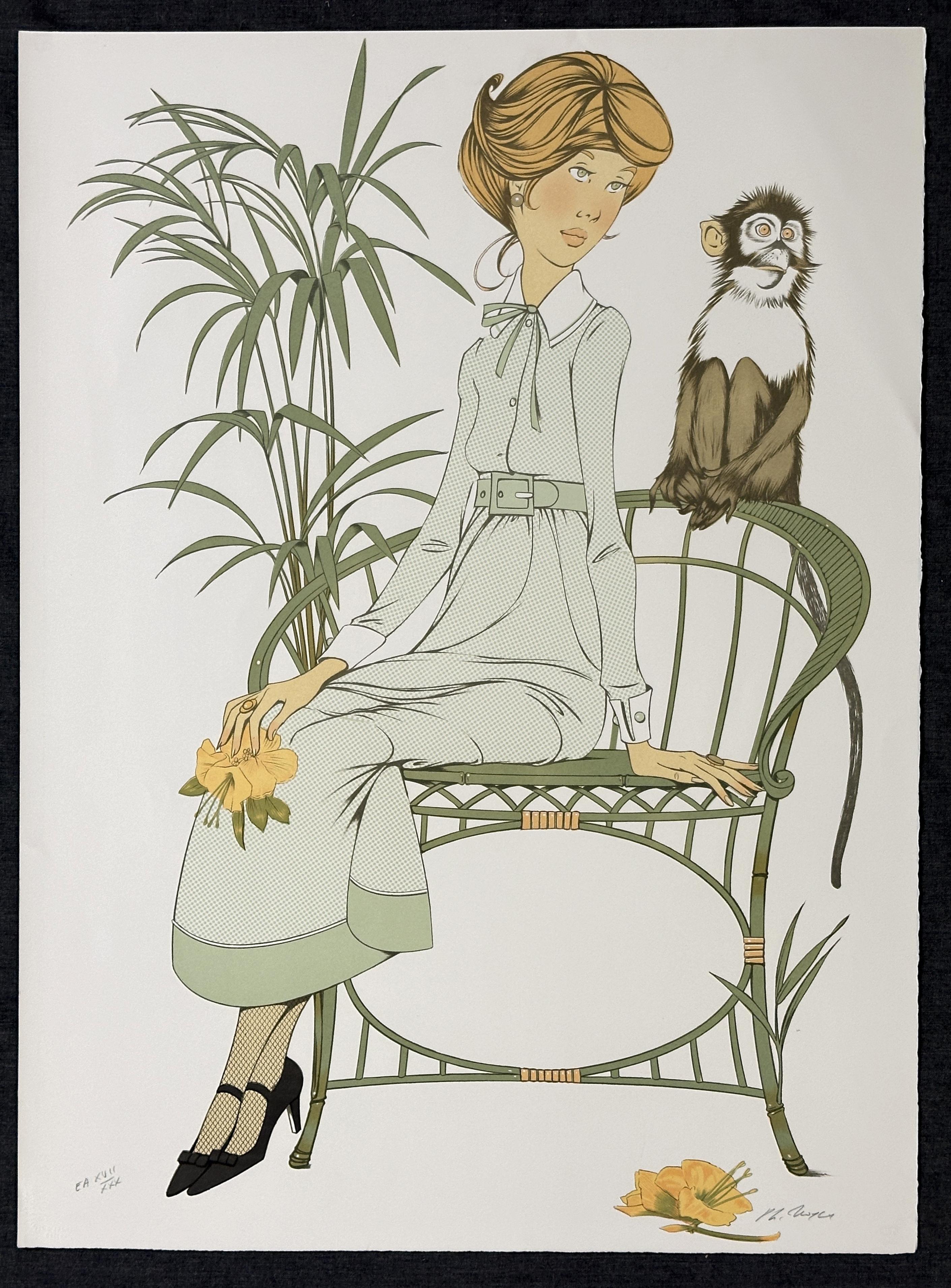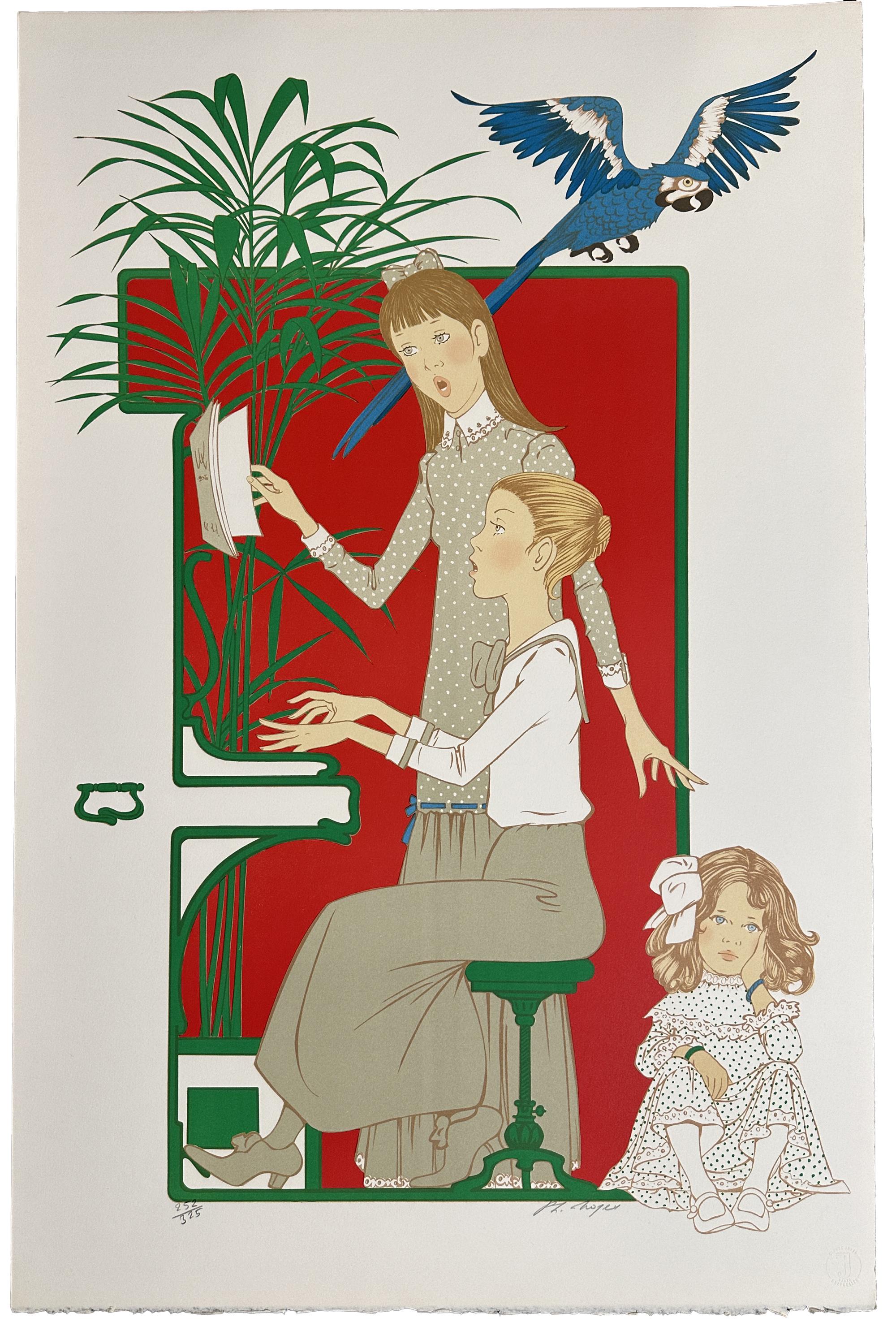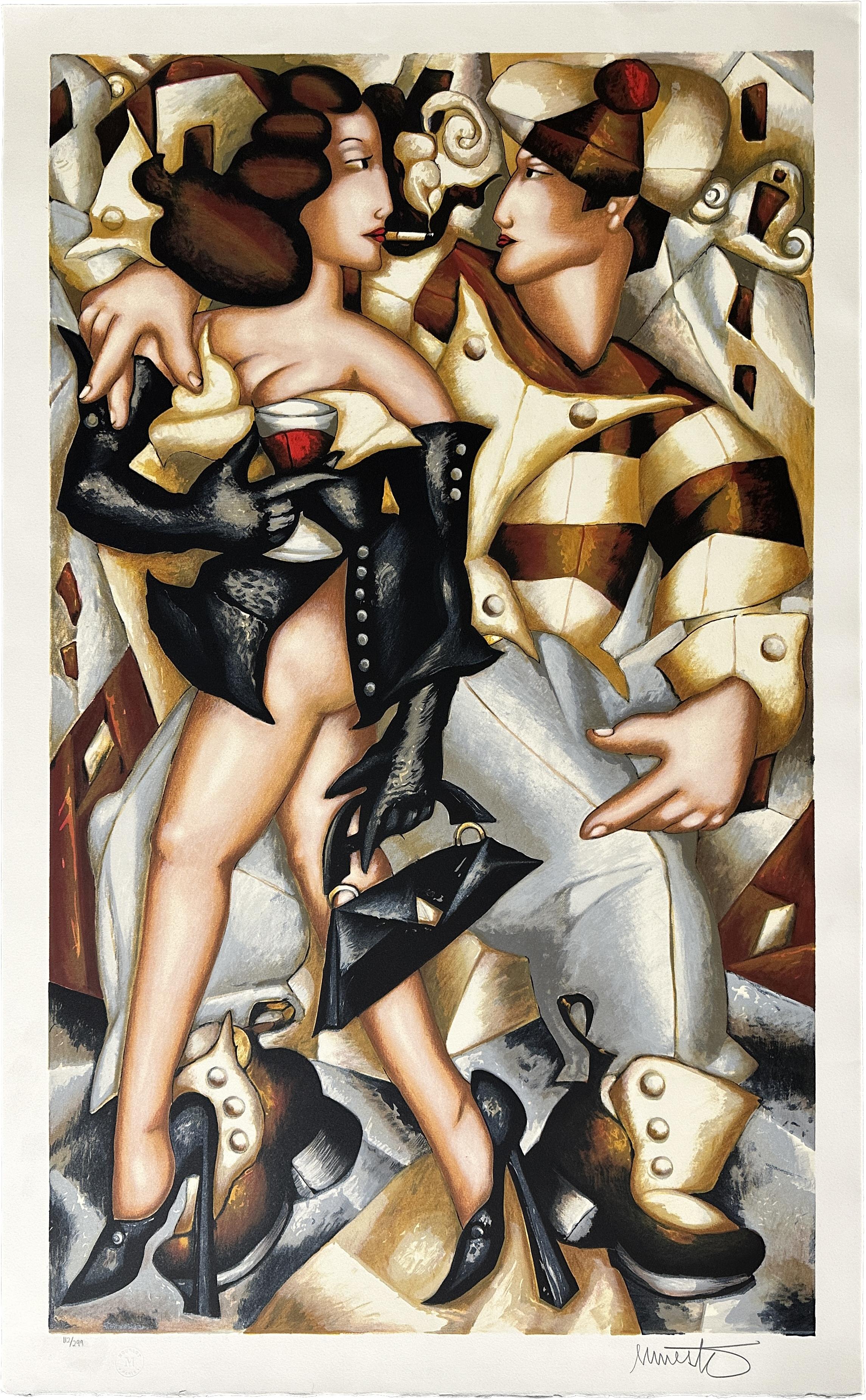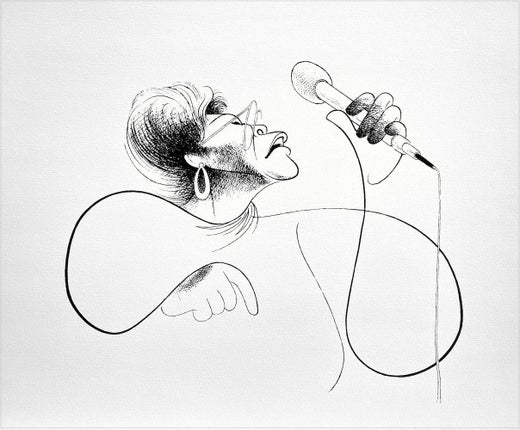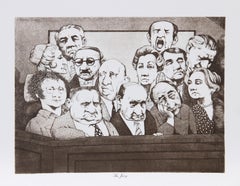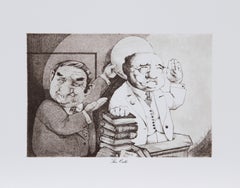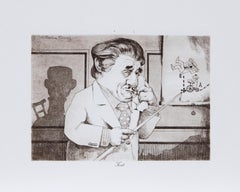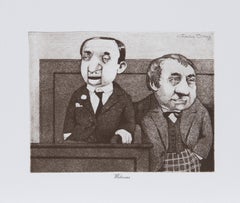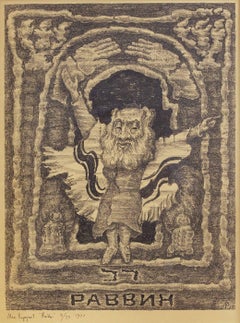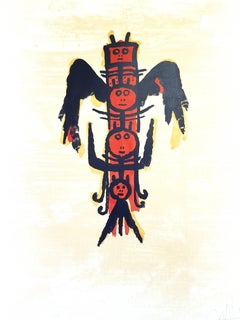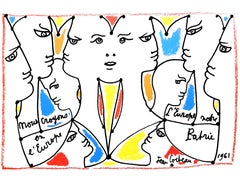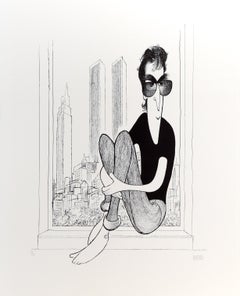
John Lennon, Lithograph by Al Hirschfeld
View Similar Items
Want more images or videos?
Request additional images or videos from the seller
1 of 8
Albert Al HirschfeldJohn Lennon, Lithograph by Al Hirschfeld
About the Item
- Creator:Albert Al Hirschfeld (1903 - 2003, American)
- Dimensions:Height: 22 in (55.88 cm)Width: 18 in (45.72 cm)
- Medium:
- Movement & Style:
- Period:
- Framing:Framing Options Available
- Condition:Minor wear consistent with age and history.
- Gallery Location:Long Island City, NY
- Reference Number:Seller: RO703211stDibs: LU4669541362
Albert Al Hirschfeld
For nearly 70 years, Al Hirschfeld created iconic caricatures of theater, film and television celebrities, capturing moments in time and documenting U.S. entertainment history in the process. Art historian Lloyd Goodrich called Hirschfeld “one of the few masters of graphic humor.” "New York Times" art critic John Russell dubbed him “the Fred Astaire of pen and ink.” Brendan Gill of "The New Yorker" stated, “To be a star on Broadway is to be drawn by Hirschfeld.” And many performers believed that, regardless of any other accolades they might achieve, “if Al Hirschfeld hasn’t drawn you, you don’t exist.” Hirschfeld began his career as a political cartoonist and became a theater caricaturist for "The New York Times" in 1925. He began creating his pure line drawings on a trip to Bali in the 1930s, and, over the course of his career, mastered the technique of using lines to capture the spirit and personality of his subjects. Hidden in each drawing is his daughter’s name, Nina, and so many people became obsessed with finding all of the Nina’s, that he developed a system of noting the number of Nina’s in each work next to his signature. In addition to "The New Yorker" and "The New York Times," Hirschfeld’s drawings appeared on playbills and posters as well as in advertisements. As a result of his work, he earned two Tony awards for lifetime achievement in theater and had a Broadway theater renamed in his honor.
About the Seller
4.9
Platinum Seller
Premium sellers with a 4.7+ rating and 24-hour response times
Established in 1979
1stDibs seller since 2014
2,970 sales on 1stDibs
Typical response time: 1 hour
Authenticity Guarantee
In the unlikely event there’s an issue with an item’s authenticity, contact us within 1 year for a full refund. DetailsMoney-Back Guarantee
If your item is not as described, is damaged in transit, or does not arrive, contact us within 7 days for a full refund. Details24-Hour Cancellation
You have a 24-hour grace period in which to reconsider your purchase, with no questions asked.Vetted Professional Sellers
Our world-class sellers must adhere to strict standards for service and quality, maintaining the integrity of our listings.Price-Match Guarantee
If you find that a seller listed the same item for a lower price elsewhere, we’ll match it.Trusted Global Delivery
Our best-in-class carrier network provides specialized shipping options worldwide, including custom delivery.More From This Seller
View AllThe Jury, Caricature Lithograph by Charles Bragg
By Charles Bragg
Located in Long Island City, NY
Caricature etching by American artist Charles Bragg. A group of jurors stare aimlessly around a courtroom.
The Jury
Charles Bragg, American (1931–2017)
Date: 1976
Lithograph
Image S...
Category
1970s Post-Modern Figurative Prints
Materials
Lithograph
The Oath, Caricature Lithograph by Charles Bragg
By Charles Bragg
Located in Long Island City, NY
Caricature etching by American artist Charles Bragg.
The Oath
Charles Bragg, American (1931–2017)
Date: 1976
Lithograph
Image Size: 6 x 9 inches
Size: 11.5 in. x 14.5 in. (29.21 cm ...
Category
1970s Post-Modern Figurative Prints
Materials
Lithograph
Tort, Caricature Lithograph by Charles Bragg
By Charles Bragg
Located in Long Island City, NY
Tort
Charles Bragg, American (1931–2017)
Date: 1976
Lithograph
Image Size: 5.5 x 8 inches
Size: 11.5 in. x 14.5 in. (29.21 cm x 36.83 cm)
Category
1970s Post-Modern Figurative Prints
Materials
Lithograph
Witness, Caricature Lithograph by Charles Bragg
By Charles Bragg
Located in Long Island City, NY
Witness
Charles Bragg, American (1931–2017)
Date: 1976
Lithograph
Image Size: 5.5 x 7 inches
Size: 11.5 in. x 14.5 in. (29.21 cm x 36.83 cm)
Category
1970s Post-Modern Figurative Prints
Materials
Lithograph
Will Rogers, Caricature Lithograph by Al Hirschfeld
By Albert Al Hirschfeld
Located in Long Island City, NY
Will Rogers
Al Hirschfeld, American (1903–2003)
Date: 1991
Lithograph, signed in pencil
Edition: Printer's Proof
Size: 20.5 x 26 in. (52.07 x 66.04 cm)
Category
1990s Post-Modern Figurative Prints
Materials
Lithograph
Beach
By Marcia Marx
Located in Long Island City, NY
Artist: Marcia Marx, American (1931 - 2005)
Title: Beach
Year: circa 1975
Medium: Lithograph, signed and numbered in pencil
Edition: 250
Paper Size: 25 x 38 inches
Category
Late 20th Century Post-Modern Figurative Prints
Materials
Lithograph
$450
You May Also Like
Lithograph Screenprint Male Heroic Figures
By Ernst Neizvestny
Located in Surfside, FL
Ernst Iosifovich Neizvestny (Russian: Эрнст Ио́сифович Неизве́стный) (born 1925) is a Russian sculptor. He lives and works in New York City.
Non Conformist Post Soviet Avant Garde
Neizvestny was born 9 April 1925 in Sverdlovsk (now Yekaterinburg). In 1942, at the age of 17, he joined the Red Army as a volunteer. At the close of World War II, he was heavily wounded and sustained a clinical death. Although he was awarded the Order of the Red Star and his mother received an official notification that her son had died, Neizvestny managed to survive.
In 1947, Neizvestny was enrolled at the Art Academy of Latvia in Riga. He continued his education at the Surikov Moscow Art Institute and the Philosophy Department of the Moscow State University. His sculptures, often based on the forms of the human body, are noted for their expressionism and powerful plasticity. Although his preferred material is bronze, his larger, monumental installations are often executed in concrete. Most of his works are arranged in extensive cycles, the best known of which is The Tree of Life, a theme he has developed since 1956.
Art career
Although Nikita Khrushchev...
Category
20th Century Post-Modern Figurative Prints
Materials
Lithograph
The Rabbi 1977 Soviet Non Conformist Avant Garde Print
By Alek Rapoport
Located in Surfside, FL
Dimensions w/Frame: 25 3/4" x 20 3/4"
Alek Rapoport (November 24, 1933, Kharkiv, Ukraine SSR – February 4, 1997, San Francisco) was a Russian Nonconformist artist, art theorist and teacher.
Alek Rapoport spent his childhood in Kiev (Ukraine SSR). During Stalin's "purges" both his parents were arrested. His father was shot and his mother spent ten years in a Siberian labor camp. Rapoport lived with his aunt. At the beginning of World War II, he was evacuated to the city of Ufa (the Bashkir Autonomous Soviet Socialist Republic). A time of extreme loneliness, cold, hunger and deprivation, this period also marked the beginning of Rapoport's drawing studies.
After the war, Rapoport lived in Chernovtsy (Western Ukraine), a city with a certain European flair. At the local House of Folk Arts, he found his first art teacher, E.Sagaidachny (1886–1961), a former member of the nonconformist artist groups Union of the Youth (Soyuz Molodyozhi) and Donkey's Tail, popular during the 1910s–1920s. His other art teacher was I. Beklemisheva (1903–1988). Impressed by Rapoport's talent, she later (1950) organized his move to Leningrad, where he entered the famous V.Serov School of Art (the former School of the Imperial Society for the Promotion of Arts, OPKh, later the Tavricheskaya Art School).
His association with this school lasted eight years, first as a student, and then, from 1965 to 1968, as a teacher. With "Socialist realism" the only official style during this time, most of the art school's faculty had to conceal any prior involvement in non-conformist art movements. Ya.K.Shablovsky, V.M.Sudakov, A.A.Gromov introduced their students to Constructivism only through clandestine means.
(1959–1963) Rapoport studied stage design at the Leningrad Institute of Theater, Music and Cinema under the supervision of the famous artist and stage director N.P.Akimov. Akimov taught a unique course based on theories of Russian Suprematism and Constructivism, while encouraging his graduate students to apply their knowledge to every field of art design. Despite differences in personal artistic taste with Akimov, who was drawn to Vermeer and Dalí, Rapoport was influenced by Akimov's personality and liberalism, as well as the logical style of his art.
In 1963, Rapoport graduated from the institute. His highly acclaimed MFA work involved the stage and costume design for I.Babel's play Sunset. In preparation, he traveled to the southwest regions of the Soviet Union, where he accumulated many objects of Judaic iconography from former ghettos, disappearing synagogues and old cemeteries. He wandered Odessa in search of Babel's characters and the atmosphere of his books.
He organized a new liberal course in technical aesthetics, introducing his students to Lotman's theory of semiotics, the Modulor of Le Corbusier, the Bauhaus school, Russian Constructivism, Russian icons and contemporary Western art. As a result of his "radicalism," Rapoport was fired for "ideological conspiracy."
He sought to cultivate himself as Jewish artist. This became particularly noticeable after the Six-Day War, when the Israeli victory led intellectuals, including the Jewish intelligentsia, to feel a heightened interest in Jewish culture and its Biblical roots. Rapoport's works of this period include Three Figures, a series of images of Talmudic Scholars, and works dealing with anti-Semitism. In the 1970s Rapoport joined the non-conformist movement, which opposed the dogmas of "Socialist realism" in art, along with Soviet censorship. The movement sought to preserve the traditions of Russian iconography and the Constructivist/Suprematist style of the 1910s. Despite the authorities' persecutions of nonconformist artists (including arrests, forced evictions, terminations of employment, and various forms of routine hassling), they united in a group, "TEV – Fellowship of Experimental Exhibitions." TEV's exhibitions proved tremendously successful.
In the same period, Rapoport became one of the initiators of another anti-establishment group, ALEF (Union of Leningrad's Jewish Artists). In the United States this group was known as "Twelve from the Soviet Underground." Rapoport's involvement with this group increased tension with the authorities and attracted KGB scrutiny, including "friendly conversations," surveillance, detentions and house arrests. It became increasingly dangerous for him to live and work in the USSR. In October 1976, Rapoport with his wife and son were forced to leave Russia.
In Italy, Rapoport exhibited at the Venice Biennale, "La Nuova Arte Sovietica-Una prospettiva non-ufficiale" (1977), participated in television programs about nonconformist art in the Soviet Union, and created lithographic works continuing his theme of Jewish characters from Babel's play Sunset.
In 1977, Rapoport's family was granted U.S. immigration status and settled in San Francisco. a significant event in Rapoport's life occurred in his meeting with San Francisco gallery owner Michael Dunev, who became his friend and representative, organizing all his exhibitions until the artist's death.
Toward the end of the 1980s and beginning of the 1990s, Rapoport completed his most ambitious works on the theme of the Old Testament prophets: Samson Destroying the House of the Philistines (1989), Lamentation and Mourning and Woe (1990), the four paintings Angel and Prophets (1990–1991) and Three Deeds of Moses (1992).
In 1992, the artist's friends in St. Petersburg organized the first exhibition of his works there since his departure into exile, with works patiently gathered from collectors and art museums. This exhibition, held in the City Museum of St. Petersburg and accompanied by headlines such as "A St. Petersburg artist returns to his town," was followed by much larger ones in 1993 (St. Petersburg and Moscow), organized in collaboration with Michael Dunev Gallery under the name California Branches – Russian Roots.
He Exhibited in "Soviet Artists, Jewish Themes...
Category
1970s Post-Modern Figurative Prints
Materials
Lithograph
Wifredo Lam - Original Handsigned Lithograph -El ultimo viaje del buque fantasma
By Wifredo Lam
Located in Collonge Bellerive, Geneve, CH
Original lithograph, hand-signed and hand-numbered in pencil by the artist.
Edition: 56/99
Excellent Conditions
Dimensions: 76 x 56 cm
Reference : Catalogue raisonné Tonneau-Ryckely...
Category
1970s Post-Modern Figurative Prints
Materials
Lithograph
Jean Cocteau (after) - Europe Our Country - Lithograph
By Jean Cocteau
Located in Collonge Bellerive, Geneve, CH
Lithograph after a drawing by Jean Cocteau
Title: Europe Our Country
Signed in the plate
Dimensions: 33 x 46 cm
Edition: 600
Luxury print edition from the portfolio of Sciaky
1961
Category
1960s Post-Modern More Prints
Materials
Lithograph
Jean Cocteau - Europe Our Homeland - Original Lithograph
By Jean Cocteau
Located in Collonge Bellerive, Geneve, CH
Original Lithograph by Jean Cocteau
Title: Europe Our Homeland
Signed in the plate
Dimensions: 33 x 46 cm
Edition: 200
Luxury print edition from the portfolio of Sciaky
1961
Jean Co...
Category
1960s Post-Modern More Prints
Materials
Lithograph
Wifredo Lam - Knight - Original Lithograph
By Wifredo Lam
Located in Collonge Bellerive, Geneve, CH
Wifredo Lam - Knight - Original Lithograph
Published in the deluxe art review, XXe Siecle
1963
Dimensions: 32 x 24 cm
Publisher: G. di San Lazzaro.
Unsigned and unumbered as issued
Category
1960s Post-Modern Figurative Prints
Materials
Lithograph
Recently Viewed
View AllRead More
Romare Bearden’s Humanity Infuses His Bright, Bold Art
Through collage, painting and printmaking, the artist foregrounded Black life in America in revolutionary new ways.
Chryssa’s 1962 Neon Sculpture Was Way ahead of the Art-World Curve
By working with lettering, neon and Pop imagery, Chryssa pioneered several postmodern themes at a time when most male artists detested commercial mediums.
